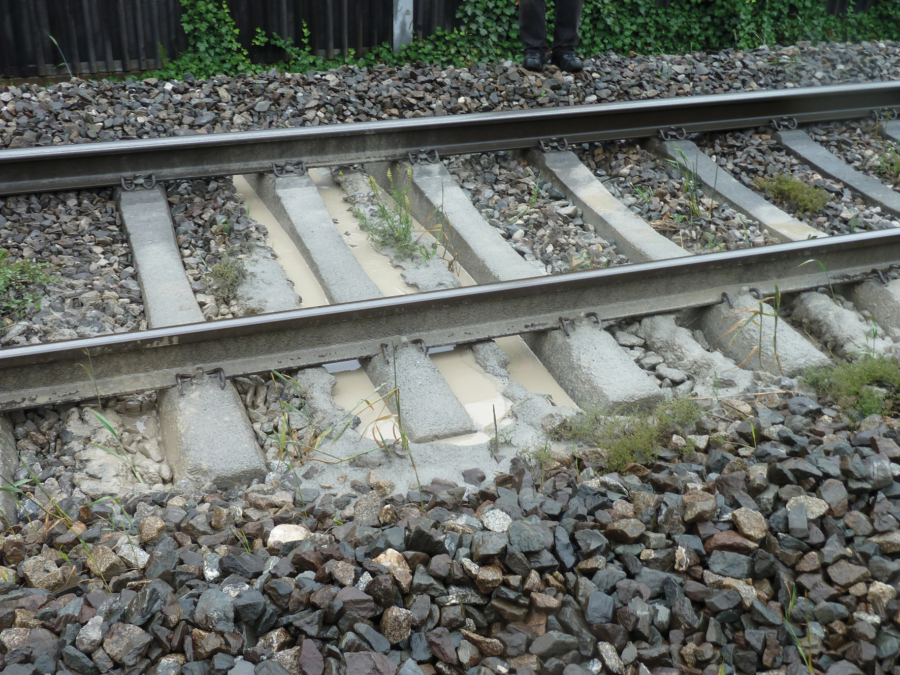
Key functions of the ballast bed
The primary functions of the ballast bed are providing a uniform transmission of the traffic load from the rail to the subsoil and enabling a high resistance of the sleepers to longitudinal and lateral displacement. Moreover, the ballast bed ensures the elasticity of the track, which reduces the dynamic stresses. In addition, it helps sustain the load-bearing capacity of the subsoil thanks to good water permeability.
All these functions cannot be provided by a ballast bed that contains too many fine particles. Instead, its bearing capacity and elasticity are reduced. Surface water can no longer drain off freely. As a consequence, the track geometry deteriorates rapidly. In many cases, this causes speed restrictions and traffic hindrances, which occur acutely and cause considerable costs.
It is still possible to correct the track geometry using a tamping machine. However, if this is the only maintenance measure that is being carried out, the track geometry quality will deteriorate quickly, making the tamping operation highly uneconomical. Maintaining a safe and high-quality track cost-efficiently requires regular ballast bed cleaning.

Even when using tamping machines to produce the optimal track geometry, it cannot be prevented from deteriorating as the track ages. Water sets off a chain reaction and reduces the load-bearing capacity of earthworks and the ballast bed.